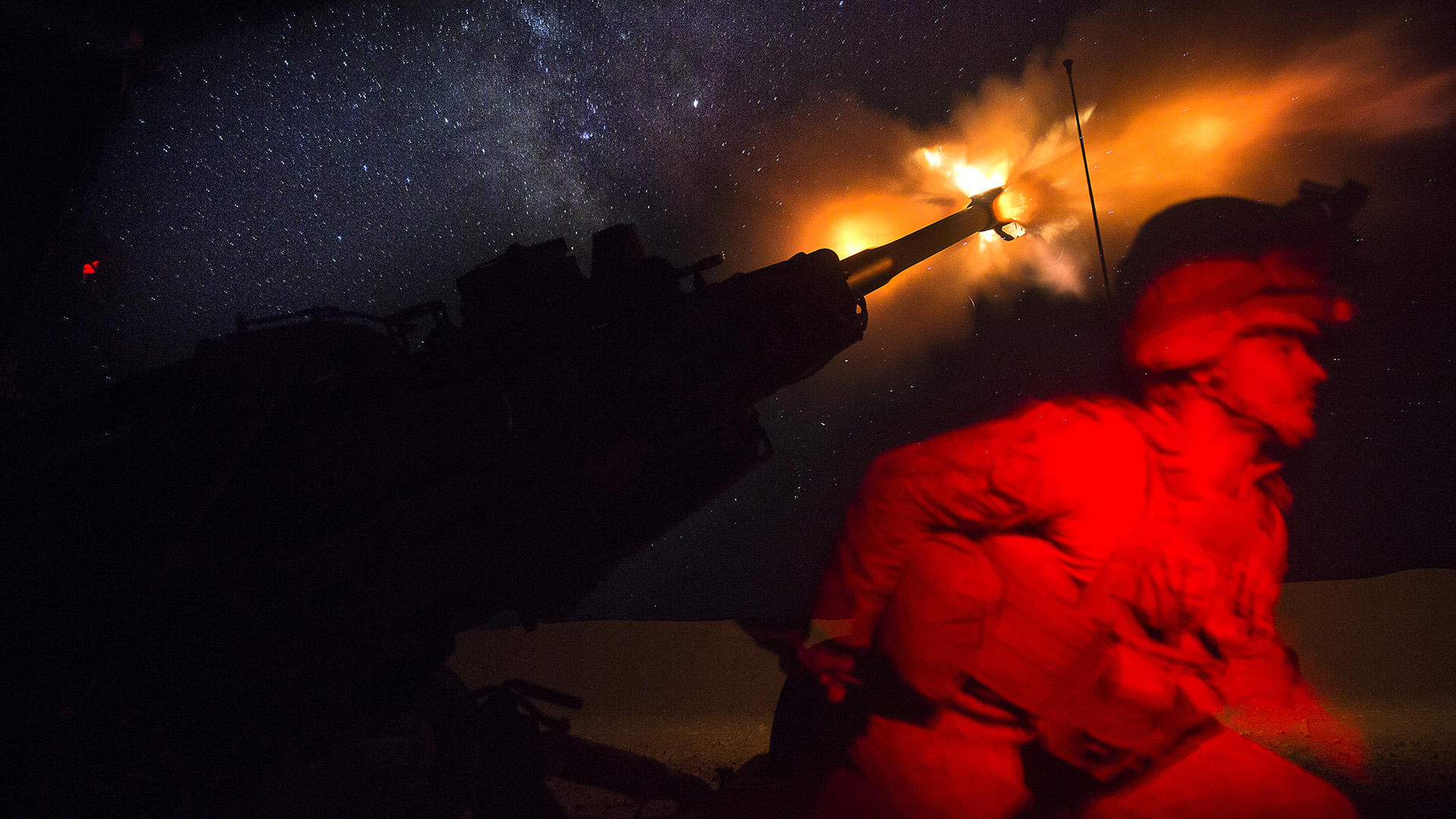

As the United States and its partners pushed ISIS out of seized territory in Syria and Iraq, American artillery barrages were key to the strategy.
Now those troops who crewed the artillery batteries are dealing with lingering psychological damage, apparently brought on by the sheer scale of the artillery fire they participated in. They are “plagued by nightmares, panic attacks, depression and, in a few cases, hallucinations.”
That is according to a new report by the New York Times, which looks into the psychological toll inflicted on artillery teams.The report cites accounts from several Marines and soldiers, as well as researchers and medical experts. It outlines several cases where troops suffered debilitating effects from the intense barrages they fired. That ranged from reportedly seeing ghosts to multiple cases of suicide. The Times’ reporting also outlined failed responses from the military to the issues facing those battery crews.
As part of Operation Inherent Resolve, the name for combat operations against ISIS, the United States and coalition partners mainly relied on local partners as ground forces. That included the Kurdish-led Syrian Democratic Forces as well as Syrian Arab groups and Iraqi soldiers and police. Those ground forces were supported by coalition airstrikes and artillery bombardments.
Subscribe to Task & Purpose Today. Get the latest military news and culture in your inbox daily.
The scope of the artillery barrages per service member was high. A relatively small number of American troops fired tens of thousands of artillery shells; the New York Times said that amount of rounds per crew member was the highest since the Vietnam War.
During the height of the fight, as ISIS was forced out of Iraq and its strongholds in Syria, battery crews were firing so many rounds they burned out at least two of their M777 howitzers. Due to the nature of the operations, many details were limited to the public, with much of the information coming when a unit returned to the U.S. or a service member was killed.
“With a 155mm artillery battery in the fight, their mission was to deny and disrupt ISIS from gaining ground or moving from their defensive positions,” Lt. Col. Jon O’Gorman, who at the time served as chief of fires for Combined Joint Task Force Operation Inherent Resolve, said in 2017 as Marines from 1/10 returned back to the United States. “These Marines rained relentless and highly accurate firepower on the enemy.”
That rate of fire and intensity appears to have been the main cause of the psychological issues plaguing returned troops. For the most part, the temporary fire bases Marines and soldiers used were well away from the frontlines. There were some attacks on those positions, resulting in American deaths, but U.S. troops were for the most part removed from close fighting. However, repeated exposure to shockwaves from artillery fire left many troops feeling unwell. They suffered symptoms similar to that of concussions, and over time developed issues similar to symptoms of PTSD.
The Marines conducted a study of one unit, Fox Battery, 2nd Battalion 10th Marines, to see the impacts of high artillery blasts on their health. The report, released in 2019, said that the Marines were being hurt by the shockwaves from their howitzers. More than half of the battery was diagnosed with Traumatic Brain Injuries. The Marines Corps did not answer New York Times’ questions about who ordered the study. One Army blast researcher the paper spoke to said that repeated exposure to such blasts can scar brain tissue and hurt neural connections.
Those troops affected by their time in Syria and Iraq also struggled with poor response from the military and services. Many were denied care as they were not officially injured.
The United States and its partners are still hunting down the remnants of ISIS. However, fighting has shifted from large efforts to retake towns and cities to smaller operations, such as helicopter raids; large artillery operations are no longer as important to coalition strategy.
The Army and Marine Corps told the New York Times they are tracking artillery crews’ exposure to such sustained fire to prevent this. However the newspaper noted that Marines in the field don’t report seeing any new preventative measures.
The 2019 report highlighted an ongoing risk to troops, noting that artillery crews firing that frequently could result in troops being taken out of action “faster than combat replacements can be trained to replace them.”
The latest on Task & Purpose
- Marines investigating video in which man claims body buried at Camp Lejeune
- The best MRE of the War on Terror, according to combat veterans
- 19 US troops have Traumatic Brain Injury after drone attacks in Iraq and Syria
- US expects Iran to continue to escalate Israel/Hamas war
- Fort Liberty special operations soldiers arrested for drug possession